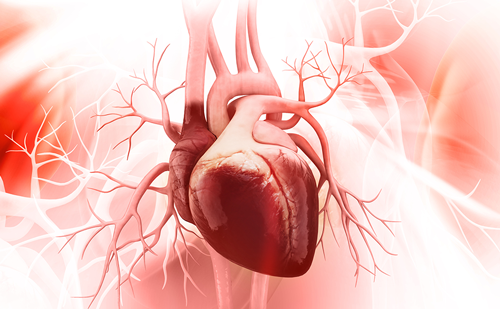Left main (LM) coronary artery disease is the atherosclerotic narrowing of the LM segment, and is often associated with involvement of the ostial disease of the left anterior descending and left circumflex arteries, called distal LM disease. Significant LM disease is defined as ≥50% angiographically-detected stenosis of the LM or angiographically <50% stenosis with positive functional tests/haemodynamics. The management options for LM coronary artery disease have evolved over recent decades; previously, coronary artery bypass graft (CABG) surgery has predominately been the gold standard in treatment, but percutaneous coronary intervention (PCI) has evolved as an attractive alternative, due to its continuing advancements.1,2 Still, the choice of revascularisation has been a topic of extensive debate and there are various factors that need to be taken into account when considering these management options, including safety, durability, survival and the potential need for repeat revascularisation.
In this expert interview, we speak with Dr Timir Paul on the topic of LM revascularisation, pitting
CABG against PCI.
Q. What is the background for surgical (coronary artery bypass graft) versus percutaneous revascularisation of left main coronary artery disease?
The LM coronary artery supplies >80% of the left ventricular myocardium; therefore, high-grade LM stenosis (>50%) places a large myocardial territory at risk for ischaemia with higher risk of major adverse cardiac events.3,4 Medical therapy alone is inferior to CABG in patients with significant LM stenosis.5 A meta-analysis including eight trials demonstrated that coronary revascularisation in addition to medical therapy resulted in a 79% and 80% relative risk reduction in 5-year mortality with CABG and PCI, respectively, compared to medical therapy alone.6 Balloon angioplasty alone or bare metal stents was associated with significant recoiling or in-stent restenosis and this drawback is largely overcome with drug eluting stents (DES).
Q. What are the key differences between the two revascularisation options?
CABG is a surgical option that needs either arterial grafts, namely left internal mammary artery or radial artery, and/or saphenous vein graft harvesting. PCI is a percutaneous endovascular intervention that involves angioplasty (balloon dilatation) or atherectomy and stenting.
Q. What are the key positives and negatives of these revascularisation methods/interventions?
CABG offers the advantage of bypassing long segments of disease or diffuse disease and complete revascularisation. The other advantage of CABG is more durable procedure with less repeat revascularisation. In contrast, higher rates of residual angina are seen in patients treated with PCI that contributes to higher rates of repeat revascularisation. In patients treated with PCI, de novo lesions outside the stented segments can lead to recurrent myocardial infarction and the need for repeat revascularisation. PCI offers quicker recovery, lower early adverse cardiovascular events and possibly short-term reduced risk of stroke. CABG is associated with delayed recovery, longer length of stay in hospital and issues with healing and infection, in addition to higher costs.
Q. In which cases would you recommend percutaneous coronary intervention, and in which would you recommend coronary artery bypass graft? Would you recommend one therapy over the other for the majority of cases?
When dealing with revascularisation of the LM, we should calculate SYNTAX score (Synergy Between Percutaneous Coronary Intervention with Taxus and Cardiac Surgery trial) and STS (Society of Thoracic Surgeon) score.7 The SYNTAX score will provide anatomic complexity of lesions, and the STS score will give operative mortality risk. The multidisciplinary heart team approach, including the general cardiologist, interventional cardiologist and cardiac surgeon, along with a detailed discussion with the patient and their family covering the advantages and disadvantages of both approaches, is the key for successful LM revascularisation.
The decision for PCI versus CABG in patients with LM disease is best made by the local heart team considering the clinical comorbidities, technical challenges, and the likelihood of safely achieving complete revascularisation with each procedure. I do not recommend one procedure over another, as the revascularisation strategy is individualised and would be made by the heart team, taking into consideration each patient’s preferences after an informed discussion.
The 2018 European Society of Cardiology guidelines on myocardial revascularisation gave LM PCI a class I recommendation (i.e., treatment is recommended) if the SYNTAX score is <22, class IIa recommendation (i.e., treatment should be considered) for a SYNTAX score 23–32, and class III recommendation (i.e., treatment is not recommended) for SYNTAX scores >33.2 In general, ostial or trunk LM stenosis, low SYNTAX score, high operative mortality risk (STS score >5%) or limited life expectancy favours PCI. Complex LM bifurcation lesions or high SYNTAX scores favour CABG. In cases of medication noncompliance or instances where the patient cannot afford the medication, then CABG is preferable. The operator’s skill and experience should be a considered in selecting PCI. Due to long-lasting arterial graft, younger patients with diabetes and reduced left ventricular function are likely to yield better long-term outcomes with CABG.
Q. What do you see for the future of left main coronary artery revascularisation?
A heart team approach with appropriate patient selection, careful assessment of LM lesions and meticulous procedural technique makes PCI a viable option for LM stenosis.1,2 Favourable outcomes of LM PCI with newer-generation DES may affect treatment decisions of CABG versus PCI. Advances in stent design and technology (such as newer-generation DES) and PCI techniques, especially image guided (intravascular ultrasound or optical coherence tomography) intervention, have contributed to the improved safety and efficacy of PCI. The availability of mechanical circulatory support may also improve the safety and outcomes of PCI in LM intervention with reduced left ventricular ejection fraction. Further studies are needed to validate the current optimism for PCI as a valid alternative to CABG. More hybrid revascularisation, such as mini thoracotomy with left internal mammary graft to left anterior descending artery and PCI to other arteries when appropriate in a protected LM, is also be considered as an alternative.






